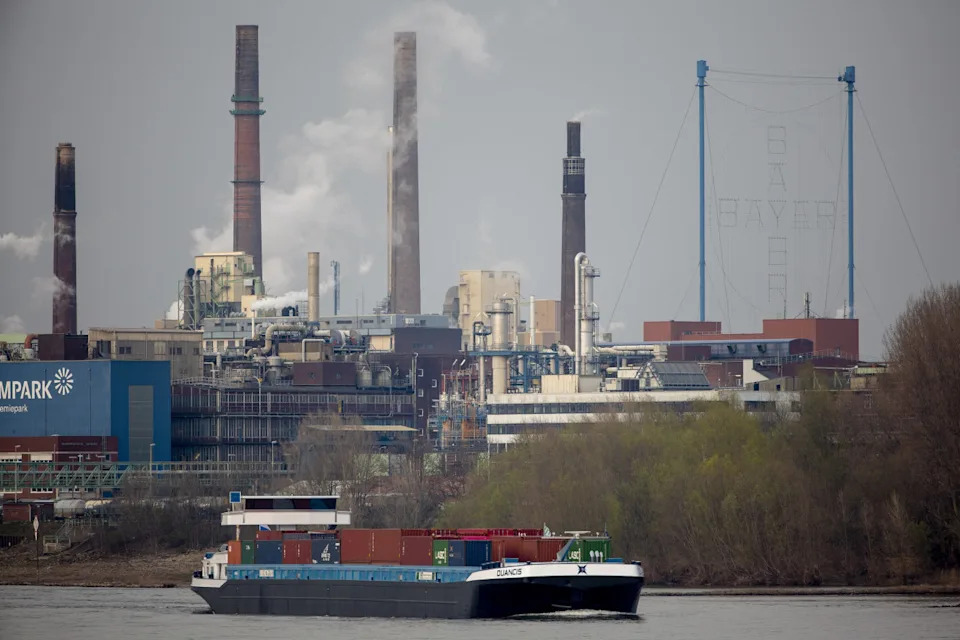
Industrial production in the eurozone’s two largest economies declined in the first month of President Trump’s global tariff blitz, a sign that an economic slowdown is underway after a start to the year that was even stronger than first estimated.
German industrial output contracted 1.4% on month in April, statistics agency Destatis said Friday, a sharper fall than the 1.0% decline expected by economists polled by The Wall Street Journal.
That offset much of the 2.3% jump in output in March, when U.S. firms stockpiled imports to get ahead of the impact from expected tariffs.
Trade data, also published Friday, showed goods exports to the U.S. from Germany sank 10.5% as companies adapted to the new trade reality. In early April, President Trump threatened 20% tariffs on most EU goods, before suspending them and leaving a 10% base tariff. In late May, he threatened a new 50% tariff before suspending them until July to allow for more talks.
Europe’s economy had improved at the start of 2025, with fresh data showing the eurozone’s gross domestic product rose 0.6% on quarter in the first three months of the year, an upgrade from the 0.3% previously estimated, and the fastest pace since the third quarter of 2022. On an annualized basis, growth was 2.5%, sharply contrasting with the 0.2% decline in the U.S.
Germany’s industry also improved in that period, posting the largest quarterly increase in production since the start of 2022. That was ahead of Russia’s full-scale invasion of Ukraine that sent energy prices higher and for years curbed the competitiveness of Germany’s energy-intensive manufacturing base.
In France, the eurozone’s second-largest economy after Germany, production also declined 1.4% in April, quashing signs of recovery booked there in the preceding months and flipping consensus expectations that output would in fact rise.
In total, April’s data suggest that just as U.S. stockpiling boosted some overseas economies in the first quarter, the end of that process is set to be a headwind for them in the second.
In that sense, the industrial and trade data are disappointing as they suggest the largest part of the recent growth surge was driven by frontloading of tariffs and not so much by substantial improvement, Carsten Brzeski, ING’s global head of macro research, said in a note to clients.
Production dived 18% for the export-orientated pharmaceutical industry in Germany after a strong rise in March, with machinery production also feeding the overall decline, Destatis said.
Indeed, much of the upward revision to GDP in the first quarter came from pharmaceutical exports, from both Germany and Ireland, according to Capital Economics’ chief Europe economist Andrew Kenningham. Irish GDP, which is volatile given it is a base for multinational companies, soared 9.7%.
Manufacturers can take comfort from the European Central Bank’s rate cut on Thursday, which could free up the ability for firms to borrow more. The new German government, led by Friedrich Merz, has announced plans to massively boost spending on defense and infrastructure that could increase demand for industrial goods toward the end of this year.
ECB President Christine Lagarde flagged the opposing trends at the central bank’s rate-decision meeting.
“While the uncertainty surrounding trade policies is expected to weigh on business investment and exports, especially in the short term, rising government investment in defense and infrastructure will increasingly support growth over the medium term,” she said.
Write to Ed Frankl at edward.frankl@wsj.com and Joshua Kirby at joshua.kirby@wsj.com
Corrections & Amplifications
Production dived 18% for the export-orientated pharmaceutical industry after a strong rise in March. An earlier version of this article incorrectly said it fell by 20%. Corrected on June 6.

